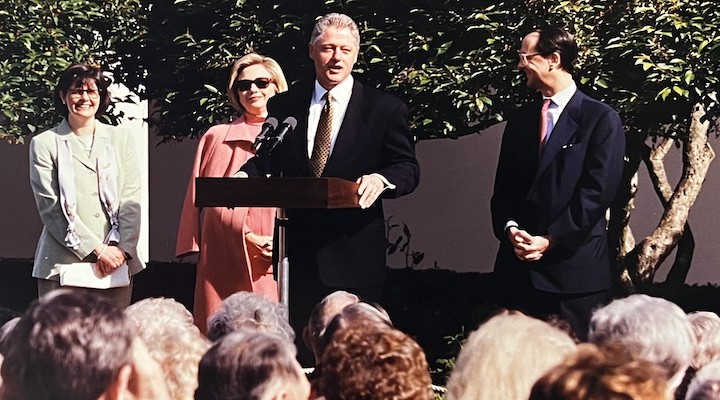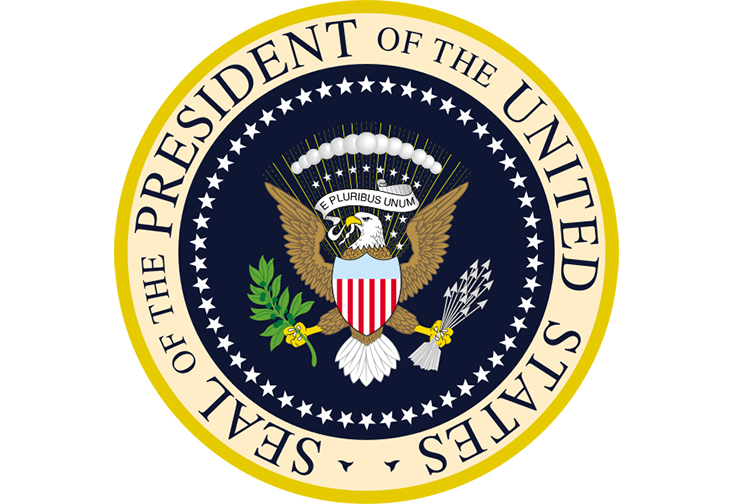By Matthew Cimitile, University Communications and Marketing
President’s Day began as a day of remembrance for the birthday of George Washington, the nation’s first president who was born on Feb. 22, 1732.
Over the years, the day transformed into a national holiday, and then incorporated a celebration of the life of Abraham Lincoln, born on Feb. 12, 1809. In modern times, the holiday has evolved to commemorate the lives and achievements of all those who have served as president and the institution of the presidency.
In honor of President’s Day and to learn more about how the role of the U.S. president has evolved, we turned to USF St. Petersburg Political Science Professor Judithanne Scourfield McLauchlan. McLauchlan has an intimate knowledge of the presidency, having worked at the White House during both terms of President Bill Clinton’s administration (1993-2001) and having been involved in eight presidential campaigns.
During the last five elections, she has taught the course Road to the White House, a seminar about presidential elections where USF students get real-world experiences interning with presidential campaigns during the first-in-the-nation primary in New Hampshire. For this election cycle, McLauchlan and her students travelled to South Carolina to participate in that state’s primary. This interview has been edited for length.

Professor Judithanne Scourfield McLauchlan (left, pictured in the Rose Garden) worked in President Clinton's Administration from 1993-2001.
Why do we have a president?
The first Constitution of the United States was the Articles of Confederation (enacted from 1777-1787), and one of the weaknesses of the Articles was there was no executive branch responsible for carrying out and enforcing federal laws passed by Congress. When the delegates came together for the Constitutional Convention (1787) to devise a stronger form of government, they all saw the need for an executive branch. They debated whether the executive should be singular or plural, how long the executive would serve and how the position would be selected.
What came out of the Constitutional Convention regarding this was Article II, which states that the executive branch would be vested in a single “President of the United States.” Article II is relatively brief and vague, but the Constitution does provide some specifics. For example, eligibility to serve includes age (35 years) and citizenship (natural-born citizen, resident for 14 years) requirements. Initially, the Framers set a four-year term for President, with unlimited re-eligibility. (Term limits were adopted with the ratification of the 22nd Amendment in 1951.) Another major compromise involved the method of selecting a president, with the Framers settling on an indirect method that retains a role for the states in our federal system, the Electoral College.
How did the Framers of the Constitution perceive the role and scope of the presidency?
I’m sure if the Framers came back today and saw the size and scope of the federal government and the executive branch, they would be surprised. Our Framers envisioned a limited government in which “checks and balances” would make sure that none of the branches would become too powerful. I think the Framers expected Congress, whose many powers were outlined in the first Article, to be the most powerful. In fact, in the early years of our government, members of Congress would select who would be their party’s nominee for president.
How has the presidency changed over the years?
As America has changed and grown into a world power, the presidency has evolved. One major turning point came during President Franklin D. Roosevelt’s administration (1932-1945) with the enactment of the New Deal as a response to the Great Depression. The executive branch that we know of today grew out of that administration and the role of the federal government in the lives of Americans changed dramatically from that point on.
Another major change has been with the federal budget. While Congress retains the power of the purse, it is the president’s responsibility to submit a federal budget proposal to Congress. Over the years, presidents have imposed greater influence over the budget process, laying out the priorities of the federal government. Likewise, in foreign policy, while the power to declare war is the responsibility of Congress, the president is the Commander in Chief. The president has the authority to send troops into combat situations, which has taken place more often as we emerged as a world power. Once troops are in harm’s way, it is difficult for Congress to pull them back.
With all of these changes, power has shifted away from Congress and towards the executive over the years.
What is the difference between the role and duties of the presidency as described in the Constitution versus a presidential norm?
As I said before, Article II outlines the role of the presidency but is not very detailed. Much of what we expect of the president’s behavior and actions we could consider an adherence to norms. Presidents of all parties have generally followed these rules and abided by long-standing American traditions. They have been guided, for the most part, by values and principles, such as a commitment to the rule of law, respecting judges and promoting civil discourse.
Looking at presidents who are considered by historians as the greatest – Washington, Lincoln, FDR – what qualities did they share and what makes a good president?
All of the presidents you mentioned – and others who might come to mind – share a common trait. And that is, those who are the “greatest” are presidents who were effective and inspiring leaders who brought us through a time of crisis. They rose to the challenge to unite us and to make us a better nation while navigating a really difficult time in our history.
